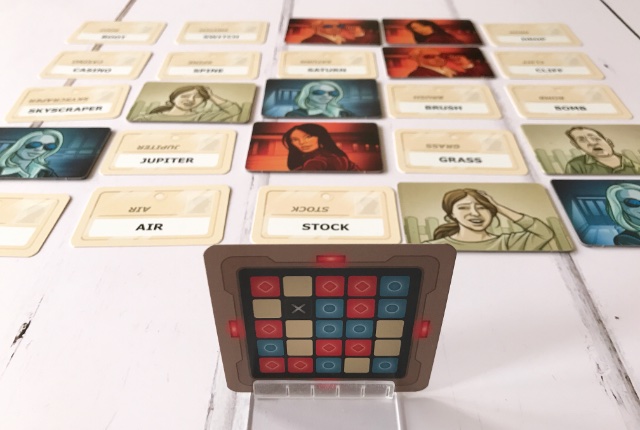
Review: Codenames Game [AD]
Have you started your Christmas shopping yet? We’ve got a review for a great game today which has been a big hit with my boys. It’s our review for this month’s Asmodee UK Blogger Board Game Club, whom we are currently working with. Asmodee UK is an established distributor of toys and games, and the Board Game Club works with bloggers by providing a free game each month in return for an honest review. This month we are reviewing the game Codenames.
Disclosure: We received a free copy of Codenames in return for an honest review. All opinions are our own.
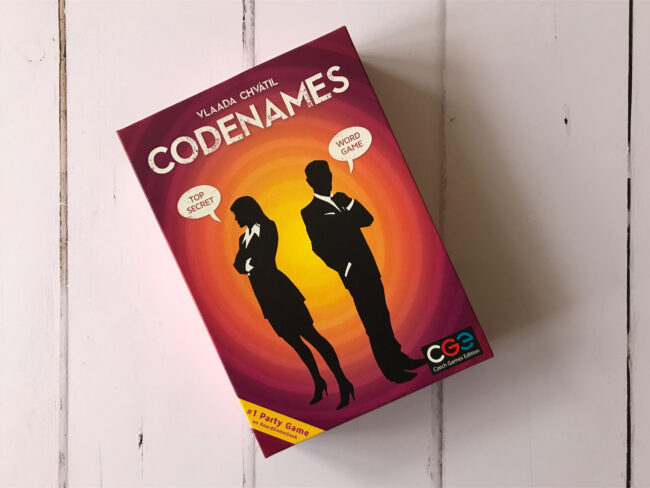
Codenames is a word game with simple rules, that’s quick to learn. The premise of the game is two rival teams of spies competing to make contact with their secret agents. This game arrived just in time for Oskar’s birthday, and as after having asked for a murder mystery trail around our local woods to celebrate, this was right up his street.
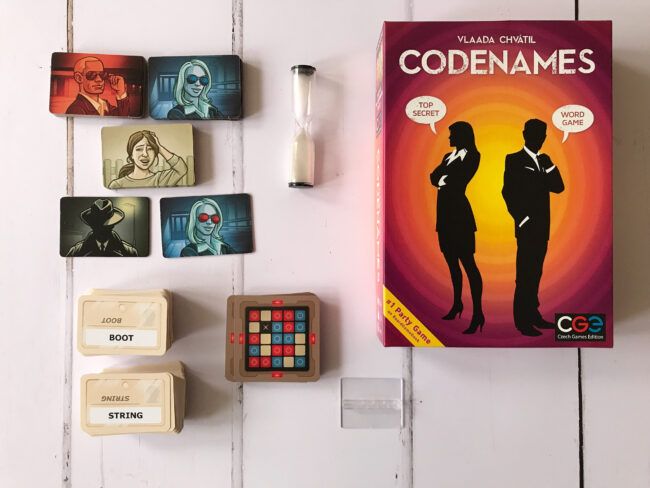
What’s in the box?
Codenames is a card based game, and in the box you will find three essential types of cards: 17 agent cards, 40 key cards, and 200 codename cards, as well as a couple of other additional cards (seven innocent bystanders and the assassin card). In the box you’ll also get a card stand, a timer and a rule book.
How to set up?
Setting up the game is really quick. You take 25 of the codename cards and lay them out on a 5 x 5 grid in the middle of the table. Then everyone splits in to two teams – a red team and a blue team. Each team has one spymaster, the rest of the team are field operatives. The spymasters sit on one side of the table, and the field operatives on the other side. The spymasters pick one of the keycards at random and place it in the stand facing them, so that the field operatives cannot see it. Each spymasters places the agent cards for their team in front of them (there are eight cards per team, plus a double agent card which goes to whichever team is starting the game), with the bystander and assassin cards in between them.
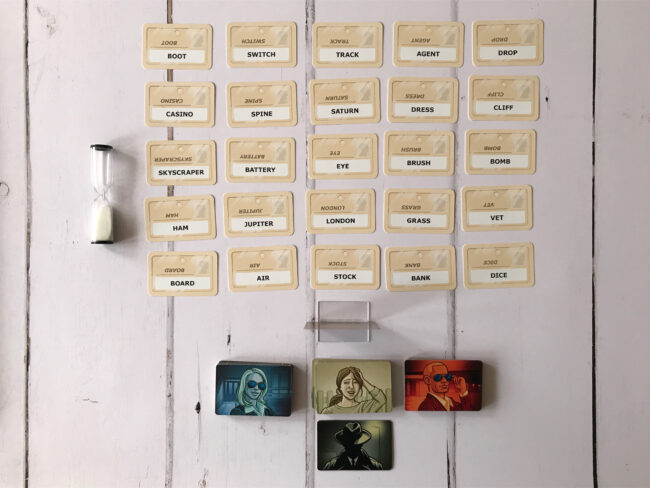
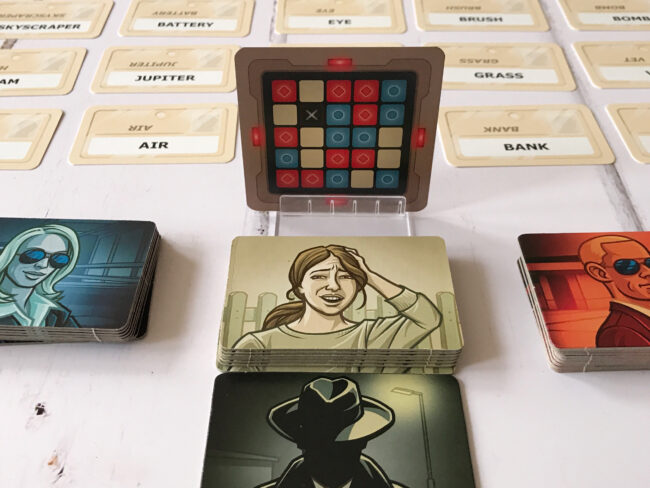 How to play?
How to play?
The grid on the key card, which only the spymasters can see, corresponds to the grid of codenames on front of them. The colour on the outside of the key card indicates which colour of team starts, and that team also gets the double agent cards as mentioned above. The spymasters’ task is to give their team one word clues for the codenames in their colour, and their team then need to deduct the correct codename from the clue. This sounds easier than it is, because you DON’T want your field operatives to pick a codename that belongs to the other team. For example, if you have the codenames “Saturn” and “Jupiter” on the grid, and one of them is red according to the key card but the other is blue, then you wouldn’t want to give “planet” as a clue because your team might pick the wrong one.
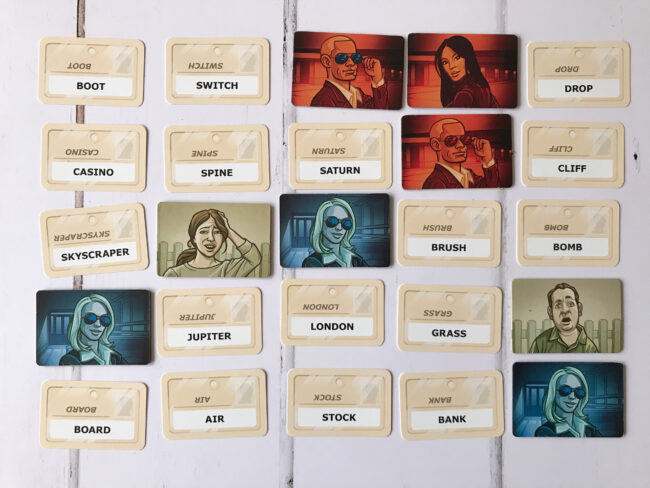
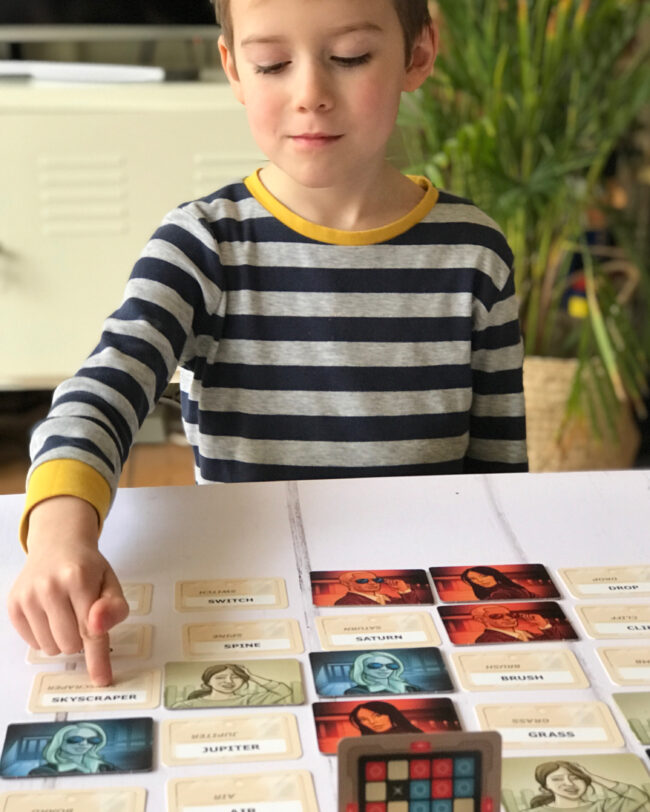
However, clues may also relate to multiple codenames, so if e.g. both “Saturn” and “Jupiter” were red according to the key card, then the red team’s spymaster could say “planet: 2” and their team then tries to guess both codenames relating to the clue. Field operatives indicate their guesses by touching a codename card. If they guess correctly, the spymaster places an agent card of their colour on top and they can guess again. If they pick a codename that is beige on the key card, then an innocent bystander card is placed on top and their turn ends. If they pick a codename that belongs to the other team, the other team gets to place one of their agents on top and the turn ends. However, if someone picks the codename that is the assassin, the game ends immediately and the other team wins. The aim of the game is to be the first team to “contact” all their agents (i.e. identity all their team’s codenames), whilst avoiding the assassin.
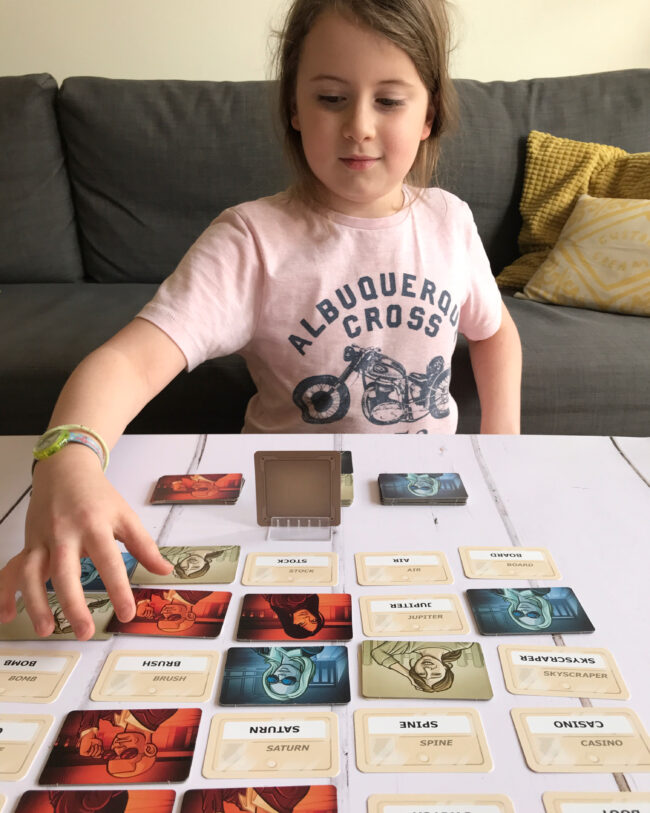
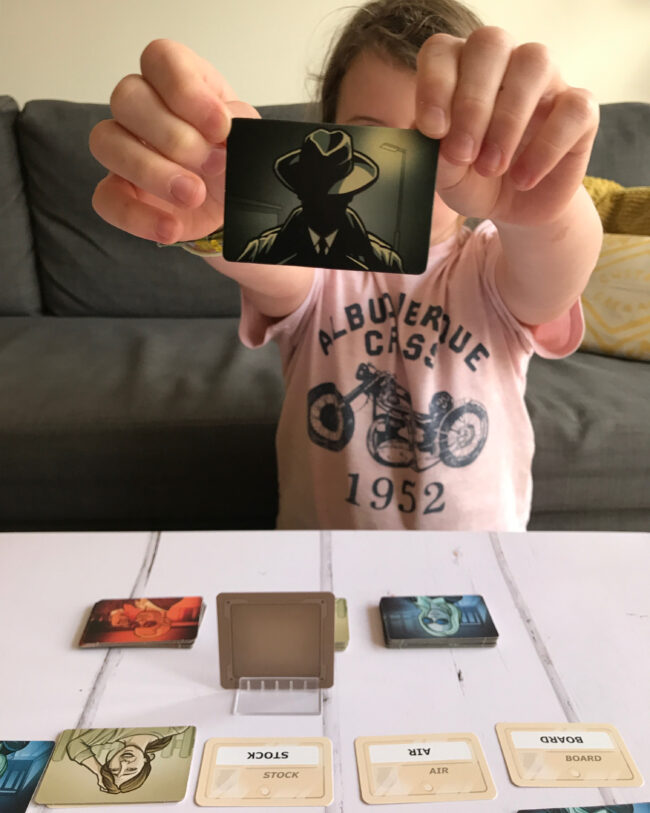
There are a few extra rules, which I won’t go in to in detail, but clues must be one word only, no extra hints or explanations allowed. You are also not allowed to use any words visible in the codenames on the table, and the spymasters must keep straight face and not give anything away through facial expressions.
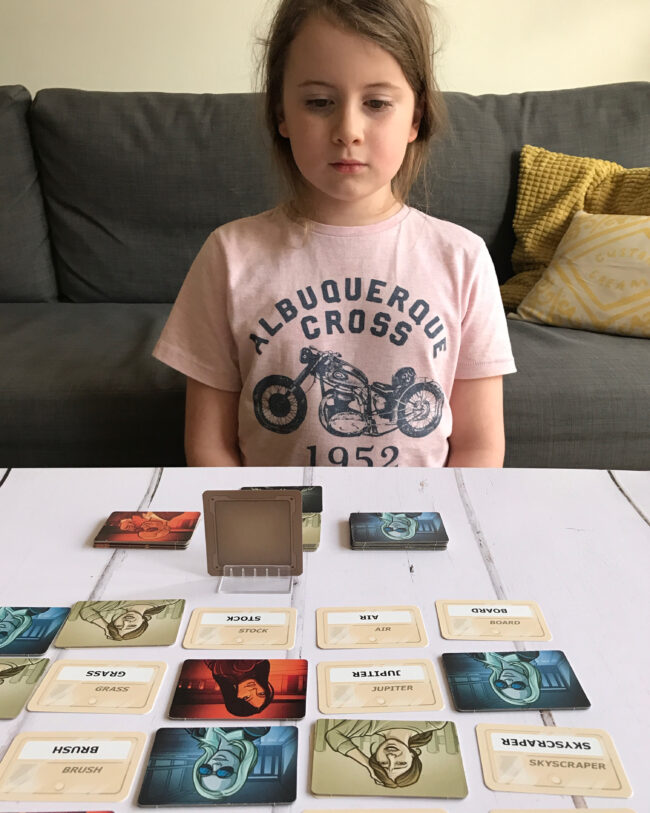
The timer is optional – you can use it if you think someone is taking too long to decide, but we haven’t used it so far as my kids get very stressed if they are being timed and their brain just shuts down. So for now we are playing without the timer.
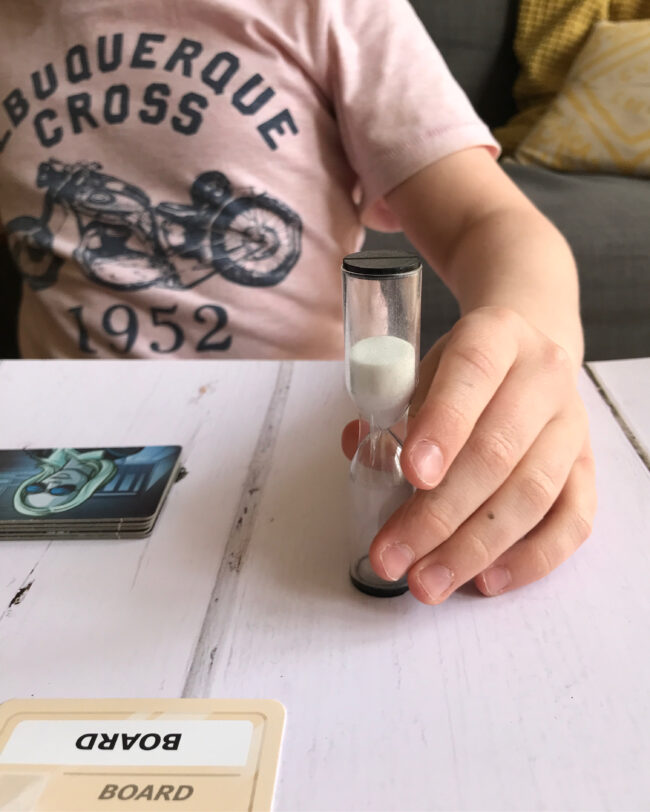
Our Verdict?
This game was an instant hit, especially with Oskar (age 10) who is really in to anything detective or secret agent related, so the theme of the game really appealed to him. But he also really enjoyed the word game challenge – especially trying to think of clues that will gain more than one card per turn for your team. The recommended age for this game is 10+ but my 6 year old also enjoyed joining in, though he played together with his dad as he is still learning to read so needed a little help. He really wanted a go at being the spymaster, though he struggled with that a little bit even with help, but he was really good at being a field operative and guessing the correct codenames.
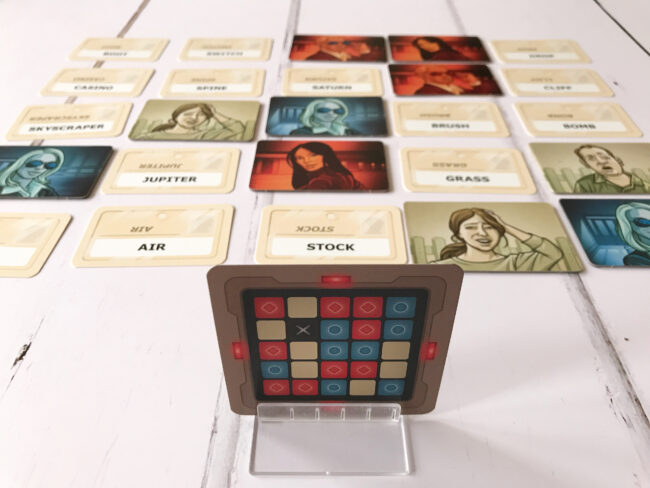
The minimum number of recommended players for this game is 4, with two people per team (though the rule book does include two and three player variants), and we have played this with a friend of ours who is in our extended bubble and has been round to visit a few times this month. But you can play with bigger teams so this would be a great game for a party (once we are allowed to have parties again!) If you have a bigger team with several field operatives, then the field operatives can discuss what the right answer is and since people think in different ways you may stand a better chance of getting it right. The fact that it’s really quick to set up and to learn, and each round doesn’t last very long, also make it a great game for parties where you don’t want to spend loads of time teaching people rules or faffing around with complicated set-ups.
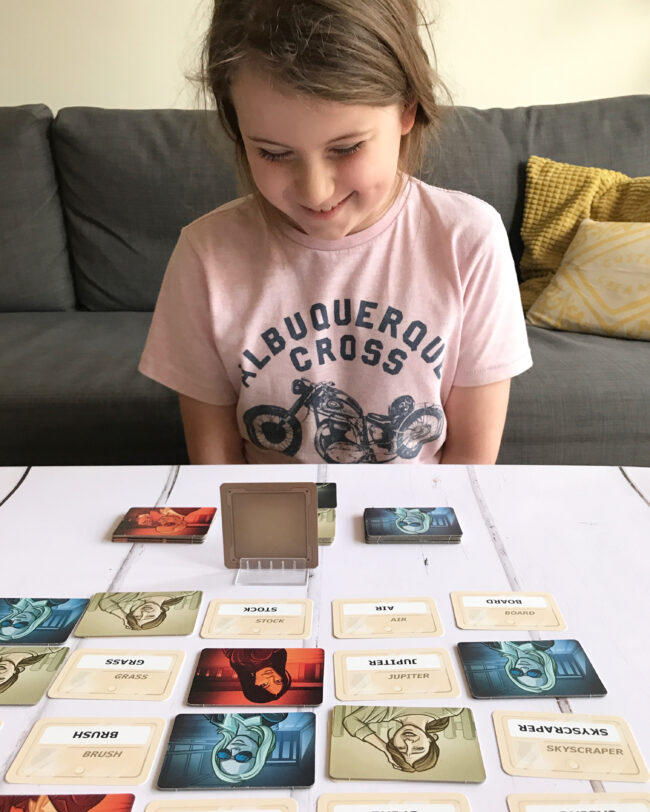
The codename cards are double-sided, so for 200 cards you actually get 400 words, and because the combination of words and the distribution on the key card grid is different every time, you will get a lot of replay value out of this unlike other word based guessing games which get a bit repetitive once you’ve played through all the cards and know all the answers.
Final thoughts… It’s quick to learn, easy to set up and play, has lots of replay value, and most of all is really fun. And at under £20 it doesn’t break the bank either. This game is definitely a keeper for us, and would make a great Christmas gift too – and makes a change from playing charades at Christmas! Codenames available to buy from a number of toys and games retailers, as well as on Amazon (affiliate link).
If you enjoyed this review, check out all the other games we have tested and loved!
Disclosure: We are members of Asmodee UK Blogger Board Game Club and received a free sample game for the purposes of writing an honest review. However, all thoughts and opinions remain our own. This post contains an Amazon affiliate link. If you shop via this link I will receive a small percentage of the revenue, without any extra cost to you, which helps to keep this blog running. Thank you.






